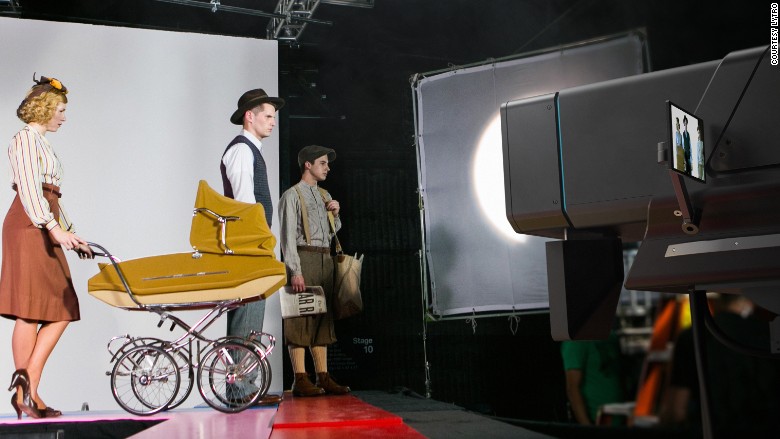
Just as the movie industry was getting used to the transition from celluloid to digital, up pops another technological revolution in the shape of a new breed of camera.
Lytro's new Cinema system is the highest resolution video sensor ever designed. Where existing cameras work by focusing light onto a two-dimensional plane, the Cinema captures the angle and direction of all light beams within a scene, to give a three-dimensional environment.
It can record holographic images at 300 frames per second from thousands of different perspectives.
This trove of additional data makes captured footage infinitely malleable, with the original shot serving as a canvas to play with. Filmmakers can change the focus, lighting, or depth of field, eliminate unwanted details or add special effects -- effectively rendering green screen redundant.
Related: Will this spherical camera revolutionize virtual reality?
"We believe this is the next generation of imaging that will replace legacy technologies," says Jon Karafin, head of light field video at Lytro.
Karafin says film crews will only need shoot a scene once as they can perfect it after, and they can save the time and expense of setting up green screen for scenes heavy on visual effects.
The downside is the price. The Cinema rigs currently rent from $125,000, but costs should fall as production scales up, including of smaller, portable units for lower budget films.
Adjusting the focus
Getting into movies is a new direction for Lytro, based in Mountain View, California and backed by investors including top VC firm Andreessen Horowitz.
The light field technology emerged from the PhD of computer scientist Ren Ng, who founded Lytro in 2006 to develop commercial applications. Ng says he wrestled with the decision to commercialize his innovation.
Nevertheless, the technology caught the eye of the late Steve Jobs, who invited Ng to his Palo Alto home for a demonstration.
Lytro launched a line of consumer cameras in 2012. But despite commercial interest that allowed it to raise $150 million through several funding rounds and expand to over 100 employees, the $1,600 gadgets struggled to compete with cheaper rivals and smartphones.
In 2015, the company said it would be scale down its consumer operations, and cut dozens of jobs.
"When you start breaking down the metrics of what it takes to produce light field, it no longer falls into the category of consumer product," says Karafin. "We made the decision to address the... blockbuster end of the professional market, and as that becomes mature we can trickle down into other markets."
That means working with movie production studios to refine the system ahead of wider release.

